I recently stumbled across some photo's that I took of an exhibition at L.A.C.M.A (L.A. county museum of art). It was a wonderful exhibition on the evolution of dress and shapes, here are some photo's that are relevant to my project :)
Friday, 31 January 2014
Making my combination
I am using the pattern for a combination dated about 1878 out of the Jean Hunnisett book Period Costume for Stage and Screen: Patterns for Women's dress 1800-1909.
 I had already begun making the combination when I had a chat with Eileen and she pulled an proper vintage combination out of her bag of tricks. Once I had seen how lovely the vintage combination was with it's dainty flat felted seams, the bias binding that has been whip stitched on by the most delicate of stitches, and the clever bias binding that lay across the gathering on the rear I completely took apart my combination and started over sewing my piece together.
I had already begun making the combination when I had a chat with Eileen and she pulled an proper vintage combination out of her bag of tricks. Once I had seen how lovely the vintage combination was with it's dainty flat felted seams, the bias binding that has been whip stitched on by the most delicate of stitches, and the clever bias binding that lay across the gathering on the rear I completely took apart my combination and started over sewing my piece together.  isn't that just the most lovely thing you've seen, and it keep the gathering from rubbing up against the body and being uncomfortable or annoying in any way. Really though I just like it cause it's so damn neat and tidy.
isn't that just the most lovely thing you've seen, and it keep the gathering from rubbing up against the body and being uncomfortable or annoying in any way. Really though I just like it cause it's so damn neat and tidy.I decided to do french seams opposed to flat felted like the original, for no reason other than I prefer french seams and haven't had a chance to use them yet this year as my last undershirt was all flat felted. The vintage one had a lovely bias binding machine sewed on, then it is folded around to the inside, and folded so as the seam is hidden on the inside. Then it is whip stitched on from the wrong side, leaving the line tiniest of stitches showing of the right side of the garment.
 here you can really see the small lovely detail of the stitches. The vintage one also has darts in it, I don't think I'll be putting darts in mine. Instead it will have lace stitched on around the neckline and waist, then I will weave ribbon through the lace to create a cinch. This way the combination won't be as limited, and can fit many different people, and/or grow/shrink with the wearer if they gain or loose weight.
here you can really see the small lovely detail of the stitches. The vintage one also has darts in it, I don't think I'll be putting darts in mine. Instead it will have lace stitched on around the neckline and waist, then I will weave ribbon through the lace to create a cinch. This way the combination won't be as limited, and can fit many different people, and/or grow/shrink with the wearer if they gain or loose weight. Here's one side of my combination after the bias binding has been sewn on, folded over, pressed, pinned and ready for hand stitching.
Here's one side of my combination after the bias binding has been sewn on, folded over, pressed, pinned and ready for hand stitching.  I am SO please with how my whip stitching turned out, it actually looks a bit better than the original if I do say so myself :) it took about 2hrs and 30-45minutes to hand stitch everything that I needed too. That's about 96inches of stitching, and it takes me about 1.4-2 minutes to stitch an inch depending on how I pace myself. Totally worth every minute of it!
I am SO please with how my whip stitching turned out, it actually looks a bit better than the original if I do say so myself :) it took about 2hrs and 30-45minutes to hand stitch everything that I needed too. That's about 96inches of stitching, and it takes me about 1.4-2 minutes to stitch an inch depending on how I pace myself. Totally worth every minute of it!Monday, 27 January 2014
Corset Flossing
Some sites and food for thought in regards to flossing my corset
http://www.foundationsrevealed.com/index-of-articles/free/beginner/67-the-basics-of-flossing
http://sidneyeileen.com/sewing-2/sewing/corset-detailing/flossing/#.UubRWnk4nR0
http://www.pinterest.com/ladyjaynes/embroidery-flossing/
http://www.foundationsrevealed.com/index-of-articles/free/beginner/67-the-basics-of-flossing
http://sidneyeileen.com/sewing-2/sewing/corset-detailing/flossing/#.UubRWnk4nR0
http://www.pinterest.com/ladyjaynes/embroidery-flossing/
Shoes for Meux
Deciding between to pairs of shoes at the moment
http://www.thevikingstore.co.uk/costume-ladies-dame-ankle-boots-7210-p.asp
Ankle boots at £27.89
Or
http://www.thevikingstore.co.uk/costume--ladies-laced-decorated-victorian-boots-6823-p.asp
calf high boots at £29.00
Or From Ebay
Here's more from that same brand
http://www.oaktreefarms.com/old-west/period.html
 Both of these are $84 (and yes that's supposed to say $)
Both of these are $84 (and yes that's supposed to say $)
http://www.thevikingstore.co.uk/costume-ladies-dame-ankle-boots-7210-p.asp
Ankle boots at £27.89
Or
http://www.thevikingstore.co.uk/costume--ladies-laced-decorated-victorian-boots-6823-p.asp
calf high boots at £29.00
Or From Ebay
For £20 (but they have a zip which I DON'T like)
http://www.oaktreefarms.com/old-west/period.html
 Both of these are $84 (and yes that's supposed to say $)
Both of these are $84 (and yes that's supposed to say $)
I'm thinking I'd kinda like to get brown boots so that I can use them afterwards, let's be honest white isn't practical.
Saturday, 25 January 2014
Undergarments: Combination
my plan as of right now is to make a combination opposed to doing a chemise and drawers, as combinations we're introduced in the 1870's I'm well within the correct time period. I've used combinations before in different theatrical productions, both as an actress and as a part of the wardrobe team. I like them because it's one less thing you have to worry about, they literally area 'combination' of a chemise and drawers, this mean you only have one undergarment to find, wear, and wash. I also like them because their sizes are fairly universal, the neckline, and waist are drawstring meaning that they can accommodate many forms and typically the inseam is nearly completely open to allow for ease when going to the bathroom. Here's an example of the split in the middle
Here are some pictures of combinations from a bit later in the century
I've been reading some bits and bobs that say that the petticoat was worn under the corset later in the century, I just don't know what constitutes as later... :( need to find that out
Here are some pictures of combinations from a bit later in the century
I've been reading some bits and bobs that say that the petticoat was worn under the corset later in the century, I just don't know what constitutes as later... :( need to find that out
steal for corsets
Busks
http://www.sewcurvy.com/corsetmakingsupplies/cat_390285-Corset-busks.html
Boning
http://www.sewcurvy.com/corsetmakingsupplies/cat_390282-Flat-steel-boning.html
http://corsetmaking.com/category/white-steel-boning.html
http://www.sewcurvy.com/corsetmakingsupplies/cat_390285-Corset-busks.html
| I think I'll be going with the conical Corset busk. I like that it get thicker at the bottom for more control over the shape of the stomach, this also helps to prevent it from concaving in due to stress. This website seems to have the best prices thus far for busks. |
Boning
http://www.sewcurvy.com/corsetmakingsupplies/cat_390282-Flat-steel-boning.html
http://corsetmaking.com/category/white-steel-boning.html
bye bye Belmonte
Finally done with my costume. Actually I'm pretty pleased by it, though I will be doing bits and bobs to it before the degree show.
corset and under garment info
A craze for tight-lacing emerged again in the late '60s when the skirt was gored and slim fitting at the waist and across the stomach. The development of the bustle by 1870 temporarily offset this. However, in the mid 1870s, dress bodices further tightened and lengthened. Corsets had to follow suit. This was only possible due to new developments in corset manufacture. A greater number of shaped pieces, many more bones, starch and steam moulding gave a well-sculpted, armour-like garment. Spoon busks were also used during the '70s and '80s - curved front clasps that widened over the stomach.
These late Victorian corsets were more than just utilitarian. The best examples were made in costly silks in a variety of colours and decorated with embroidery, lace and ribbon.

By 1900, suspenders had become attached to the bottom of corsets. The curved front of the corset straightened, no longer dipping in at the waist. This was considered to be a more healthy cut.
During the nineteenth century, the corset tended to be worn under the petticoat, until the cuirasse dress of the 1870s induced the fashionable woman to wear her under-petticoat beneath her corset. The corset shaped the Victorian woman. It tended to elevate the bust (a leftover of the Regency period) flatten the stomach, narrow the waist and generally smooth out the irregularities in her figure. The result was very curvaceous and womanly, though very restrictive. The culmination of this hourglass look came in the 1870s with the cuirasse bodice, when even the outward curve of the hips was revealed by the clinging cut of the dress. During the later bustle years of the 1880s, the figure remained sleek under all of the drapery.
Bustle
During the 1880s, pannier-like skirt drapery reappeared, and the bustle soon followed. This time the silhouette was less domed and more angular, the skirt jutting out horizontally and then sharply dropping down like a table. The 1880s bustle can be achieved with two or three steels threaded horizontally through the back panel of a dress underskirt or separate petticoat and tied across the inside, with the addition of a small pad to prevent the top from sagging. However, a good variety of patent bustles were available in the 1880s to be worn under the petticoat.
Bust Improvers
Bust-improvers enhanced the bust when fashion demanded it. They ranged from light padding on the inside of 1840s bodices, (filling in the hollow below and the ridge above the elevated bust-line), to the wire domes of the curvaceous 1880s, (which look suspiciously like two small sieves on a piece of string). It is difficult to give these garments the serious attention they deserve.
Early Victorian underwear was very plain and utilitarian and often made of firm, white linen, though cotton was emerging as an alternative. Everything was handsewn, and trimming was kept to a minimum. As the century progressed, cotton began to replace linen as the affordable fabric of everyday underwear.
In the 1870s and 80s a craze for woollen underwear arose - wool next to the skin was the newest health fad. Fitted combinations of knitted woollen fabric were promoted by Jaeger - a high street label that is still around today. Cellular cotton (Aertex) underclothing also enjoyed limited popularity. These kinds of fads erred on the sensible side and though popular, were not considered highly fashionable.  One fabric that emerged in the 1880s, however, was extremely fashionable. Silk underwear, along with the finest cottons and linens, was luxurious and highly favoured. White was still the predominant colour of most underlinens, but cream silk was available as was black by the 1890s. Flannel underclothing, however, was often coloured, as were many decorative petticoats by the 1860s.
One fabric that emerged in the 1880s, however, was extremely fashionable. Silk underwear, along with the finest cottons and linens, was luxurious and highly favoured. White was still the predominant colour of most underlinens, but cream silk was available as was black by the 1890s. Flannel underclothing, however, was often coloured, as were many decorative petticoats by the 1860s.
 One fabric that emerged in the 1880s, however, was extremely fashionable. Silk underwear, along with the finest cottons and linens, was luxurious and highly favoured. White was still the predominant colour of most underlinens, but cream silk was available as was black by the 1890s. Flannel underclothing, however, was often coloured, as were many decorative petticoats by the 1860s.
One fabric that emerged in the 1880s, however, was extremely fashionable. Silk underwear, along with the finest cottons and linens, was luxurious and highly favoured. White was still the predominant colour of most underlinens, but cream silk was available as was black by the 1890s. Flannel underclothing, however, was often coloured, as were many decorative petticoats by the 1860s.
http://www.tudorlinks.com/treasury/articles/viewvictunder2.html
Corsets and Bustles from 1880-90 - the Move from Over-Structured Opulence to the 'Healthy Corset'
By the 1880s the corset had become a very elegant and desirable object in a woman's wardrobe and much attention paid to its design and execution. The rapid growth of the corset manufacturing industries meant that there was greater variety in materials, colour, size and fit. The most expensive might be made of satin, brightly coloured corsets also became more acceptable.
Corset makers and manufacturers prided themselves on the excellent fit that could now be had with ready-to-wear corsets. As well as being made for different bust and hip measurements they were also designed to suit a variety of body types from 'stout', to 'slim' and 'full' to 'graceful'. Manufacturers also tried to boost sales by giving corsets fancy names such 'La Fiancée', which not surprisingly promised physical beauty and success in marital competition, and 'Swanbill' with a logo of a swan gliding past waterplants, probably intended to conjure up an image of demure elegance and a gently curving figure.
In the mid 1880s, after a brief respite, bustles returned and in a more exaggerated form than before. They were usually very structured and sometimes jutted out at right angles from the centre back of the body. This gave rise to the popular belief that a tea tray could be balanced on them. Steel strips were also often attached to the insides of dresses to exaggerate the backward curve of the bustle.
Bustles came in all shapes and sizes. Some were constructed almost entirely of steel, others resembled colourful cushions. These were often stuffed with horsehair, down and even straw to achieve the desired fullness. Bustles were often ridiculed in journals and the popular press. But although they could be cumbersome and uncomfortable, as with the corset and crinoline one must be careful not to focus on extremes. Most bustles in museum collections are not as enormous as all the written criticisms would have us believe. They were usually adjustable in size and women could wear different styles according to their activities and the time of day. Small 'tournures' fastened to the corset were recommended for walking, small 'puffs' were for the early afternoon to remove the flat look of the dress and larger, longer bustles were suited to the ballroom.
'The New Phantom' bustle, dating from about 1884, had a special feature. The steel wires are attached to a pivot so that they folded in on themselves on sitting down and sprang back when the wearer rose. A novelty bustle made to commemorate Queen Victoria's Golden Jubilee celebrations contained a less useful device. It was fitted with a musical box that played 'God Save the Queen' each time the wearer sat down.;
In the late 1880s, fashion moved on and the 'bustled' shape was no longer desirable. A small horsehair pad attached inside the skirt was now sufficient to shape the back of the body. By the 1890s hips had emerged to stay. Skirts were simpler and had a sharply defined silhouette of their own without the need for artificial aids. They were cut in an A-line shape flowing from the waist, and heavy materials, stiff petticoats or a firm interlining were usually enough to support them.
Without the bustle even stronger emphasis was placed on the waist. This change in silhouette necessitated a new form of corset. The style became harder and less rounded, the body longer and they were often very heavily boned on each side. Gwen Raverat, who wrote an account of growing up in Cambridge in the 1890s, Period Piece, paints a realistic and very touching picture of the restraints caused by wearing corsets:
'the ladies never seemed at ease…. For their dresses were always made too tight, and the bodices wrinkled laterally from the strain; and their stays showed in a sharp ledge across the middle of their backs. And in spite of whalebone, they were apt to bulge below the waist in front; for, poor dears, they were but human after all, and they had to expand somewhere.'
But, at the same time new technological developments, the growing interest in sports, physical well-being and body comfort were leading to some interesting creations which combined luxury with a concern for health and fitness.
In 1878 Dr Gustave Jaeger argued that woollen clothing promoted better health. He stated that wearing natural, undyed wool next to the skin was a healthy alternative to silk or cotton as it allowed perspiration to pass freely away, leaving the skin dry and warm. By the 1890s Jaeger was marketing a range of woollen underwear including 'Sanitary Woollen Corsets' for women. The woollen Jaeger corset is reinforced with cording rather than great amounts of whalebone struts making it more comfortable to wear. Adjustable shoulder straps and front buttoning create a sensible rather than attractive image.
Aertex, a cellular cotton fabric, fills the spaces between the whalebone supports of another corset of the time. First manufactured by the Aertex company in 1888, the fabric helped keep the skin cool in summer and warm in winter. It is still used in the sportswear industry today. The idea of wearing 'healthy corsets' is an alien and contradictory concept to us. But in the late 19th century, innovations in design and the widespread advertising of less restricting styles were evidence of a new way of thinking which was to contribute to major changes in fashionable dress.
from http://www.vam.ac.uk/content/articles/c/corsets-and-bustles-1880-1890-from-over-structured-opulence-to-the-healthy-corset/
Saturday, 18 January 2014
About Lady Meux
Lady Valerie Susan Meux was a socialite in the victorian times and wife to Sir Henry Meux, 3rd baronet, a London brewer. Originally Valerie Langdon, though thought to be an actress using the stage name Val Reece, working at a casino in Holborn. There were many rumours that she had been a prostitute as well. Such rumours were probably why Sir Henry and Valerie married in secret and in hast on the 27th of August 1878.
Everyday lives: Next Project picked!
James Abbott McNeill Whistler (July 11, 1834 – July 17, 1903) was an American-born, British-based artist active during the American Gilded Age. Averse to sentimentality and moral allusion in painting, he was a leading proponent of the credo, "art for art's sake".
Originally I was thinking of doing his "Symphony in flesh" but it was thought that is wasn't quite 'ordinary' enough. So while looking though some of Whistler's paintings we found a painting of Lady Meux in a day dress and it was decided that it would be an acceptable outfit for me to make. What's kind of ironic is that I had seen the portrait and really liked it. It made me think that it would be a good idea for me to do something that had a corset and also that i'd really like to do a bustle. But I didn't think that the picture would be appropriate for this project, low and behold it has been approved!
It's also perfect since by making this it really frees up my options for my final project
Subscribe to:
Comments (Atom)




















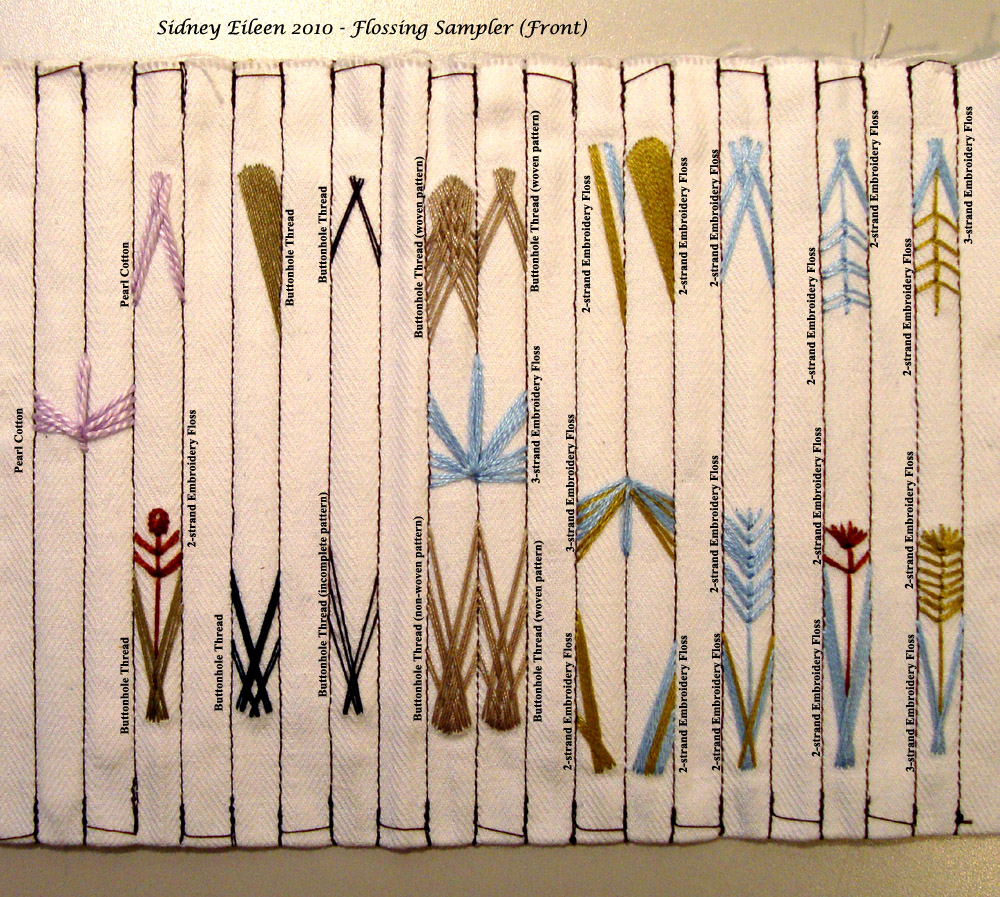




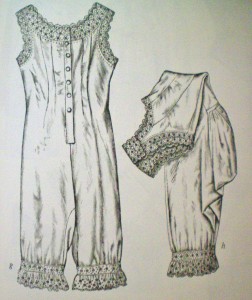



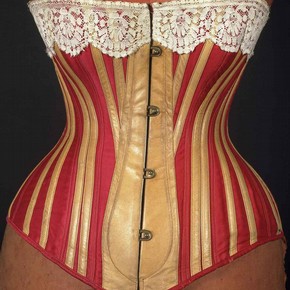
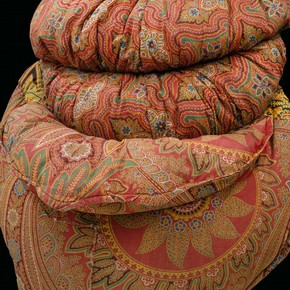
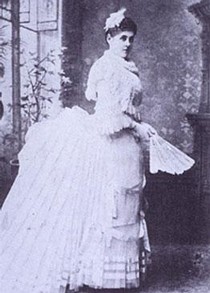
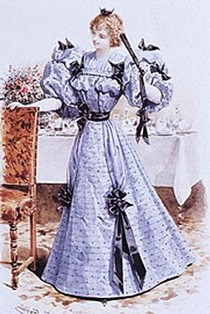
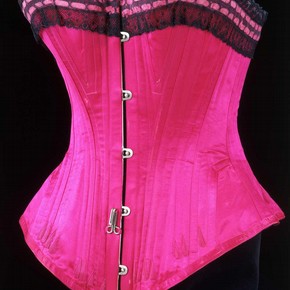
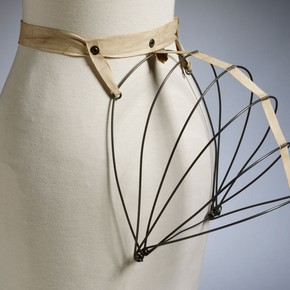
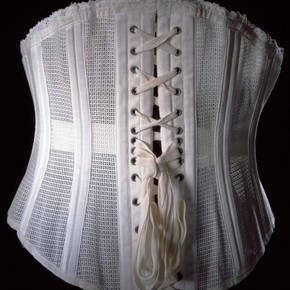
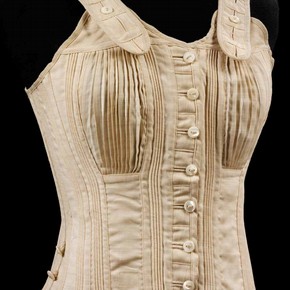
,_1881.jpg)



